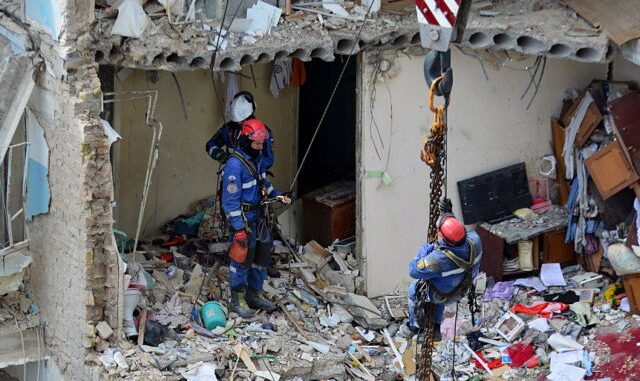
| Published June 25, 2025
In a major escalation of its drone warfare capabilities, Russia is now deploying Iranian-designed drones equipped with artificial intelligence and advanced anti-jamming technology in its ongoing assault on Ukraine. Ukrainian officials and international analysts have confirmed that recent drone wreckage recovered from the battlefield reveals a significant leap in both hardware and software sophistication—marking a concerning evolution in autonomous warfare. As tensions mount, experts warn that this development could usher in a new, less accountable era of AI-driven military strikes, raising urgent ethical and strategic questions.
📡 What Was Discovered
-
Wreckage of an advanced white drone recovered in Ukraine contained a high-tech AI computer platform, camera, radio link enabling live control from within Russia, and an Iranian-manufactured anti-jamming system—evidenced by eight antennas—unlike typical Russian-made drones.
🧠 Technological Enhancements
-
Drones, evolving from Iranian Shahed/“Geran” designs, now feature:
-
AI-driven targeting (machine vision, possibly thermal detection)
-
Thermobaric warheads
-
Enhanced anti-jamming hardware
-
Jet propulsion tests.
-
-
These upgrades enable dynamic targeting mid-flight and greater resistance to electronic countermeasures.
24 Civilians Killed in Ukraine by Russian Drone, Missile, and Artillery Strikes Says Kyivhttps://t.co/hHnxPGWMMr
— Breitbart London (@BreitbartLondon) June 24, 2025
NATO F-16s Scrambled in Eastern Europe as Russia Launches Largest Air Raid on Ukraine Yethttps://t.co/cPkN2JPGev
— Breitbart London (@BreitbartLondon) June 9, 2025
🎯 Tactical Impact
-
Russia has shifted tactic: combining high-altitude and low-level flights, deploying swarms with decoys, and using drones to soften defenses ahead of missile strikes, increasing strike success rates (from ~6% to ~16–50%).
-
Deployment of these AI-enhanced drones is linked to significant upticks in strike accuracy since early 2025.
🔄 Russia–Iran Defense Pact
-
The drones originated from a $1.7 billion Russia–Iran agreement in 2022. Initial Iranian imports were assembled in Russia’s Alabuga facility; production has since been localized with ongoing tech transfers.
-
Experts caution that while Israeli air campaigns may disrupt Iranian drone production facilities, much technology has already been transferred to Russia, ensuring short-term continuity.
⚠️ Strategic and Ethical Concerns
-
The deployment of AI-capable, semi-autonomous drones underscores increased risk of civilian targeting and reduced human oversight—raising ethical alarms and calls for international regulation of autonomous weapons.
-
A groundswell for global treaties on autonomous weapons is growing, though key powers (like Russia and the U.S.) continue to resist stricter controls.
🧭 Strategic Gains vs. Ethical Risks
🛡️ Strategic Gains
-
Enhanced Strike Accuracy: AI-driven visual targeting and advanced anti-jamming systems make Russian drones more precise and harder to neutralize. Ukraine reports a significant increase in successful strikes.
-
Tactical Adaptability: These drones can dynamically change course mid-flight, respond to changing battlefield conditions, and coordinate in swarm attacks—giving Russia an edge in layered offensive strategies.
-
Reduced Human Cost (for operators): Russia can strike deeper into Ukrainian territory without risking pilot lives, relying on autonomous or semi-autonomous drone missions.
-
Domestic Production Advantage: With Iranian tech transferred to Russian factories, production can continue despite sanctions or disruption of Iranian supply chains.
⚠️ Ethical Risks
-
Civilian Targeting Potential: The autonomy granted to AI systems raises the likelihood of misidentifying or hitting civilian targets, especially in dense urban areas.
-
Accountability Issues: If an autonomous drone commits a war crime, determining legal responsibility becomes murky—human operator or algorithm?
-
Escalation of Warfare Tech: Other nations may race to develop or acquire similar autonomous systems, fueling a new AI arms race without clear international regulation.
-
Loss of Human Oversight: Increased reliance on AI decision-making reduces human judgment in life-and-death combat scenarios, a major concern for humanitarian watchdogs.
 Bottom Line:
Bottom Line:
Russia’s integration of AI-enhanced, Iranian-designed drones into its military campaign against Ukraine marks a pivotal shift in modern warfare. While these systems provide clear strategic advantages—improved precision, adaptability, and production resilience—they also raise urgent ethical concerns about accountability, civilian safety, and the unchecked rise of autonomous combat technologies. As the battlefield evolves, so too must international norms and regulations to ensure that innovation does not come at the cost of humanity.
SOURCES: BREITBART – Ukraine Claims Russia Using New AI-Driven Iranian Drones
AP NEWS – Drone debris found in Ukraine indicates Russia is using new technology from Iran
STAR TRIBUNE – Drone debris found in Ukraine indicates Russia is using new technology from Iran




